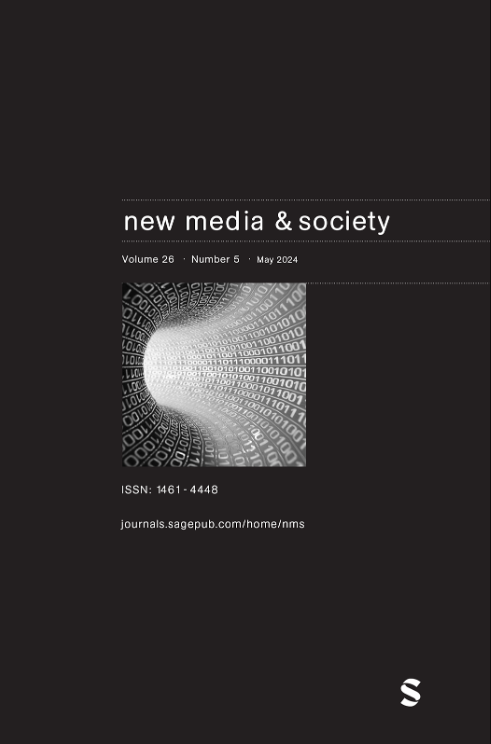A speculative political economy of virtual/augmented reality: Synchronization and immanentization
IF 4.3
1区 文学
Q1 COMMUNICATION
引用次数: 0
Abstract
Virtual and augmented reality are, alongside AI, some of the most feted technologies of the 2020s. However, unlike AI it remains unclear whether there is a distinct political economy of VR/AR. This article argues—in a speculative mode—that there is by drawing together political economy and medium theory. I contend that the economic significance of VR/AR is an operation of real-time虚拟/增强现实的思辨政治经济学:同步性与内在化
虚拟现实和增强现实与人工智能一样,是本世纪20年代最受欢迎的技术之一。然而,与人工智能不同的是,目前尚不清楚VR/AR是否存在独特的政治经济学。本文将政治经济学和媒介理论结合起来,以一种思辨的方式论证了这一点。我认为VR/AR的经济意义是一种实时同步的操作,在这种操作中,身体、现实世界和虚拟空间进入了时空协调。我通过对同时定位和绘图(SLAM)操作的分析来说明这一点。同步实现了一种新颖的内化形式:将身体的呈现内化到数字中。嵌入实现了空间的叠加:虚拟世界的分层——它可以以与现实世界相同的方式进行交互——在现实世界之上,而不会遮蔽它。这为加速生产和流通过程提供了新的可能性。
本文章由计算机程序翻译,如有差异,请以英文原文为准。
求助全文
约1分钟内获得全文
求助全文
来源期刊

New Media & Society
COMMUNICATION-
CiteScore
12.70
自引率
8.00%
发文量
274
期刊介绍:
New Media & Society engages in critical discussions of the key issues arising from the scale and speed of new media development, drawing on a wide range of disciplinary perspectives and on both theoretical and empirical research. The journal includes contributions on: -the individual and the social, the cultural and the political dimensions of new media -the global and local dimensions of the relationship between media and social change -contemporary as well as historical developments -the implications and impacts of, as well as the determinants and obstacles to, media change the relationship between theory, policy and practice.
 求助内容:
求助内容: 应助结果提醒方式:
应助结果提醒方式:


